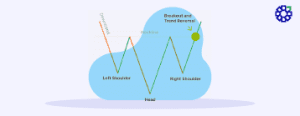What Is The Best Time Frame For Intraday Trading?
- 15th October 2025
- 01:00 PM
- 6 min read
The stock market in India has seen a surge from 4.2 crore as of FY20 to 13.2 crore in FY25. It shows that more Indians are actively participating in stock market trades, including intraday. However, to ensure an optimised return, you must learn the best time frame for intraday trading as a strategy.
Why do Timeframes Matter in Intraday Trading?
Intraday trading refers to buying and selling securities on the same trading day. Trading in the Indian stock market starts at 9:15 AM, and as an intraday trader, you must close your position typically between 3:10 PM and 3:20 PM IST.
Therefore, to increase the chances of being profitable, it is important to understand the best intraday time frame:
- It helps to understand the price movement by monitoring the market. Suppose you are tracking a 15-minute chart and see a company’s stock prices moving from INR 200 towards INR 220.
- Timeframes during intraday trading help make informed decisions. You enter around INR 202 when the trend is upwards and exit at INR 218 within the same session.
- It might help lower risks by avoiding unnecessary trades. Suppose you see prices move only INR 2 to INR 3 an hour. You skip such trades and preserve funds for stronger opportunities.
Choosing From the Intraday Trading Chart Time Frame
Now that you have an idea of the importance of the best time frame for intraday trading, you must check the different time frames to choose your preferred one:
-
1-Minute Charts
If you talk about the use case of this chart, it is potentially effective for quick scalping strategies and locating opening range-breakouts. Simply put, it means you can make quick trades at the start of the session by spotting sudden price moves. For example, you buy shares at INR 100 during the breakout and sell at INR 103 within minutes.
-
5-Minute charts
It helps you to spot rapid price movement with more clarity than 1-minute charts and locate short-term reversals. In the context of short-term reversal, suppose you buy shares at INR 100 and when the chart shows a sudden dip (reversal), you sell them at INR 104 if they rise again, making a small profit.
-
15-minute charts
As an intraday trader, this type of chart might be helpful for you to spot the best time frame for intraday trading. It offers an in-depth insight into the price movement of stocks. Thus, it offers a close analysis, and you might capitalise on the price movements effectively.
-
30 and 60 Minutes Charts
These charts are useful for an intraday trader as they let you identify potentially profitable long-term intraday trends. This also helps in reducing market noise compared to shorter timeframes and provides you with a broader market outlook.
With PL Capital Group – Prabhudas Lilladher, you can create a free Demat account and start investing in stocks, mutual funds, and more. Download the app today!
When Should You Trade between the First Half and the Second Half?
- You must closely monitor the market sentiment, effectively research and evaluate the performance of your preferred company stocks and choose the best time frame for intraday. This lets you trade anytime during the market hours confidently.
- However, you must note that during the first half, i.e. from the opening bell to noon, the market faces higher volatility. Stock price swings are high, too. It typically settles by 10:15 AM IST.
- Thus, there might be chances of stock prices rising quickly, which lets you make an optimised and quick profit.
- As per the market analysis, a favourable window with potential profit is between 10:15 AM and 2:30 PM. However, note that during midday, price movements might become slower, and volatility might be low.
- When the market is near closing, there might be chances of expanding and re-emerging trends.
Should I Trade in the First Fifteen Minutes?
- If you are an experienced trader, the best time frame for intraday trading during the first 15 minutes might be less risky than if you are a beginner.
- To explain the reason, let us resort to an example. Suppose, due to a geopolitical reason, the stock prices of your preferred company drop from INR 200 to INR 150.
- During these initial minutes, the market adjusts to such price swings, and the price might fall further. As a beginner, without a strategy, trading in such a situation might be risky.
- Seasoned investors might take advantage of low and higher price points and reverse them. Continuing with the example, they might buy the stocks at INR 150, betting on it to bounce back, and if it does, they sell them and make a profit.
Advantages of Trading at the Optimum Time Frame
- Choosing the best time frame for intraday trading helps you trade when the stock market is most active. It might bring more profit potential, trade setups, etc.
- If you trade during the optimum time frame, it helps reduce guesswork and provides a disciplined investment strategy aligned with the time frame.
- Intraday time frames help you set smart stop-losses and targets, improving your chances of a successful trade.
Conclusion
Choosing the best time frame for intraday trading is one of the key strategies for potential profit. While the market is highly volatile during initial hours, it settles during midday and might reemerge when the market is near closing.
With PL, you can invest in stocks, mutual funds and more and diversify. Download the Pl Capital app today!
Frequently Asked Questions
1. How do different time frames impact intraday trading strategies?
As the market remains highly volatile in the morning, it settles and becomes less volatile during midday. Thus, time frames impact liquidity, return potential, etc., for intraday traders.
2. Can I use multiple time frames in intraday trading?
Yes, you can utilise multiple time frames by using time charts of distinct durations (e.g. 5 minutes and 15 minutes) for the same or different stocks.
3. What time frame should beginners use for intraday trading?
Beginners should prioritise starting their intraday trades from 9:30 AM IST.
4. Is the 5-minute chart good for intraday trading?
Yes, it helps you with location, rapid movement or swings in stock prices and even takes advantage of short-term reversals.





